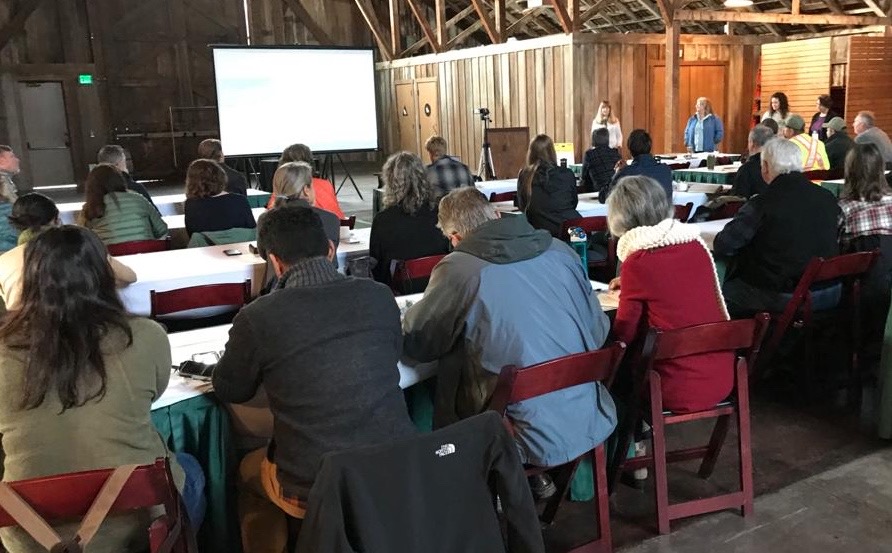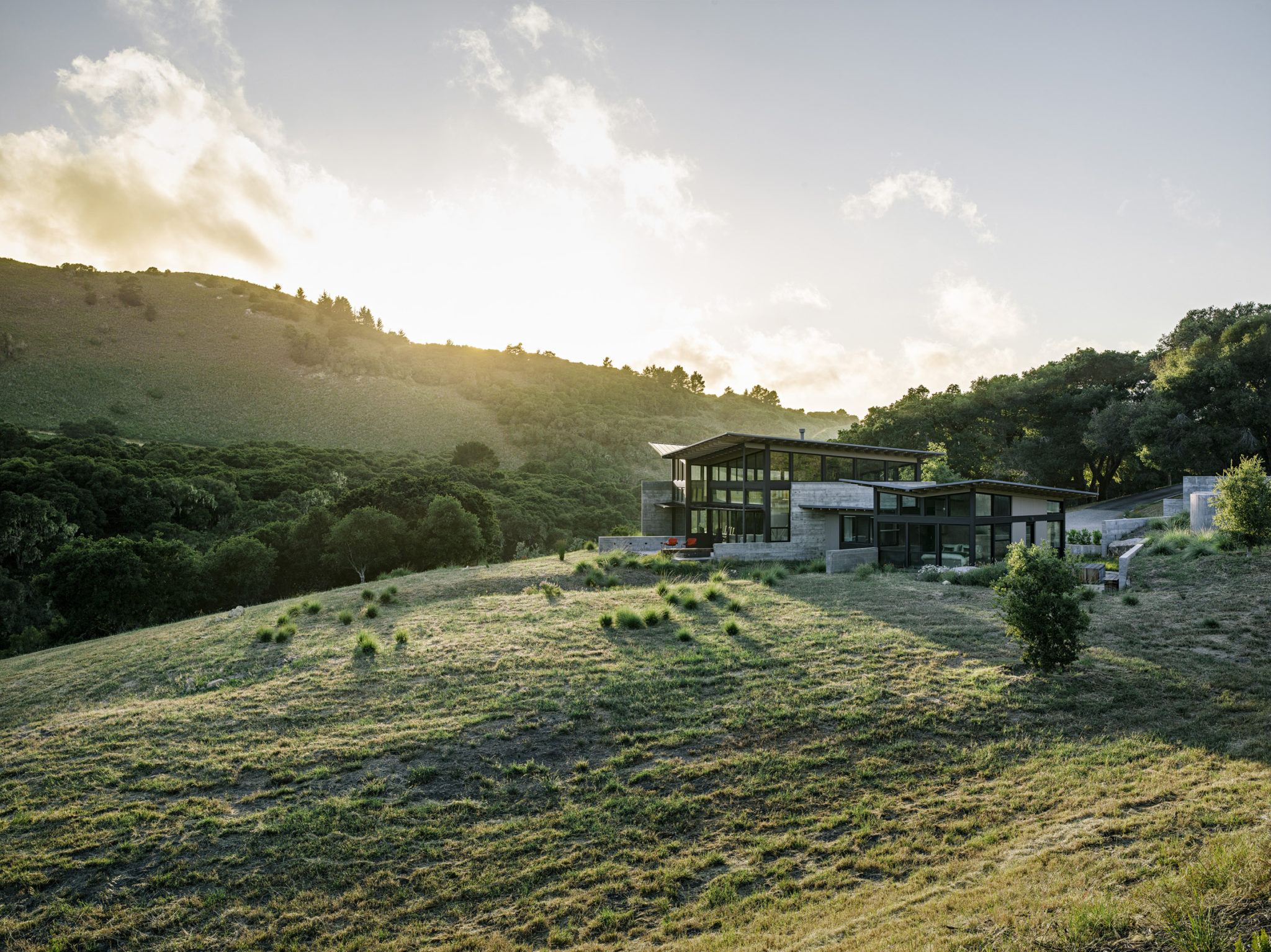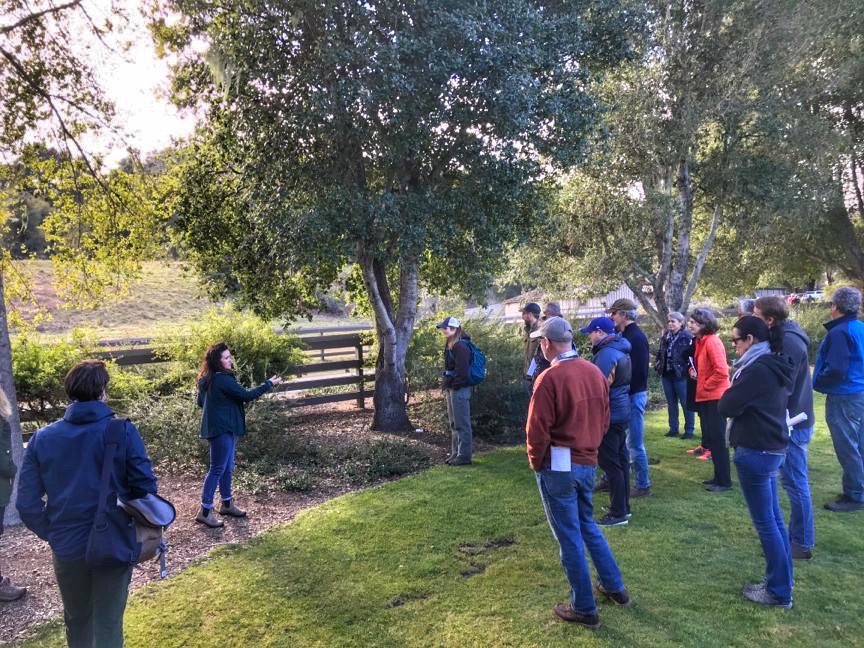Managing the Fuel Management Program across the Santa Lucia Preserve’s 20,000 acres is no small feat. Facilitating site visits, reviewing plans, coordinating approvals, consulting with implementors and following up on treatments is a full-time job, and only one of many responsibilities under the Conservancy’s Conservation Program Manager, Lindsay Cope. In the midst of the fuel management workflow, it occurred to Lindsay that a critical component of the program was missing – training and outreach to implementors and consultants hired by The Preserve community. This is key because it’s also the Conservancy’s responsibility to ensure contractors understand how to implement the treatments correctly. Lindsay’s revelation lead to spearheading the Conservancy’s first ever Biodiversity Friendly Fuel Management Training on January 22, which attracted 50 attendees from diverse fields.
The Biodiversity Friendly Fuel Management Training brought together arborists, landscape architects, Preserve homeowners, landscapers, contractors, and Preserve and Conservancy staff with the goal of helping them understand how to implement fuel management treatments and to understand the technical aspects of The Preserve’s biodiversity friendly practices.
 On The Preserve, we carefully achieve defensible space in a manner that is sensitive to, and protective of, natural resources by emphasizing vegetation management from the building out and the ground up. Our practices preserve the natural structure of the landscape — shrubs, trees and grasses are all managed to reduce continuity and density of vegetation.
On The Preserve, we carefully achieve defensible space in a manner that is sensitive to, and protective of, natural resources by emphasizing vegetation management from the building out and the ground up. Our practices preserve the natural structure of the landscape — shrubs, trees and grasses are all managed to reduce continuity and density of vegetation.
Participants at the training learned how to see the landscape with fire-safety in mind, advancing their ideas of how to manage properties to reduce ignition while simultaneously supporting natural systems.
Elsewhere, throughout the state, clear cutting of all vegetation within 100 – feet of homes is occurring, resulting in destruction of valuable habitat and rich ecological benefits of different plant communities. The different approach taken on The Preserve though, is what attracted participants to the training.
Our Standards balance public safety and natural resource protection, allowing homeowners to retain screening vegetation and native plant diversity while reducing the risk of ignition and spread. The Standards are detailed prescriptions to reduce wildfire fuels, retain healthy native vegetation, avoid erosion and slope destabilization, preserve trees and shrubs for habitat and privacy screening, and protect water quality, watershed health and groundwater recharge.
 Fuel management expert, Carol Rice, and her partners, Esther Mandeno and Kathy Murphy, led the training, diving deep into how our practices are different and why that is important. The Fuel Management Standards are a tool to guide fuel management decisions, with several options depending on the management goals for a property. Want to promote your native grasses and wildflowers? Mow a little later to allow them to broadcast their seeds. Worried more about invasive species? Mow mid-spring to remove the invasives during their growth phase before seeds form. The hands-on training took participants into the field to make observations around The Preserve Event Barn and then gather again to discuss the best approach to reduce fuels.
Fuel management expert, Carol Rice, and her partners, Esther Mandeno and Kathy Murphy, led the training, diving deep into how our practices are different and why that is important. The Fuel Management Standards are a tool to guide fuel management decisions, with several options depending on the management goals for a property. Want to promote your native grasses and wildflowers? Mow a little later to allow them to broadcast their seeds. Worried more about invasive species? Mow mid-spring to remove the invasives during their growth phase before seeds form. The hands-on training took participants into the field to make observations around The Preserve Event Barn and then gather again to discuss the best approach to reduce fuels.
Conservancy Executive Director Christy Fischer provided guidance and examples of how we work in partnership with landowners and their teams to implement these Standards within the protected Openlands of each residential property. Productive conversations were had about changes and trends in fuel management and how those changes are implemented from design to long-term management.
Landscaping was a big topic of conversation, due to the potential risk it creates in increasing fuel for fire over time. Participants walked away understanding that fire smart landscaping around the home is possible – by thinning shrubs, pruning tree limbs, and sometimes swapping plants for more fire-safe options. All of this new learning is part of a paradigm shift to ensure the built environment is defensible in the event of wildland fires.
As a leading fire-safe community, The Preserve is encouraging the spread of these practices in Carmel Valley and beyond. The more places that put this into practice, the better prepared for wildfires California will be. Already, we have received requests to share our biodiversity sensitive practices for fire safety with broader audiences. Stay tuned for dates on an upcoming opportunity for landowners to learn more about how The Preserve Standards are biodiversity friendly.
By Lindsay Cope
